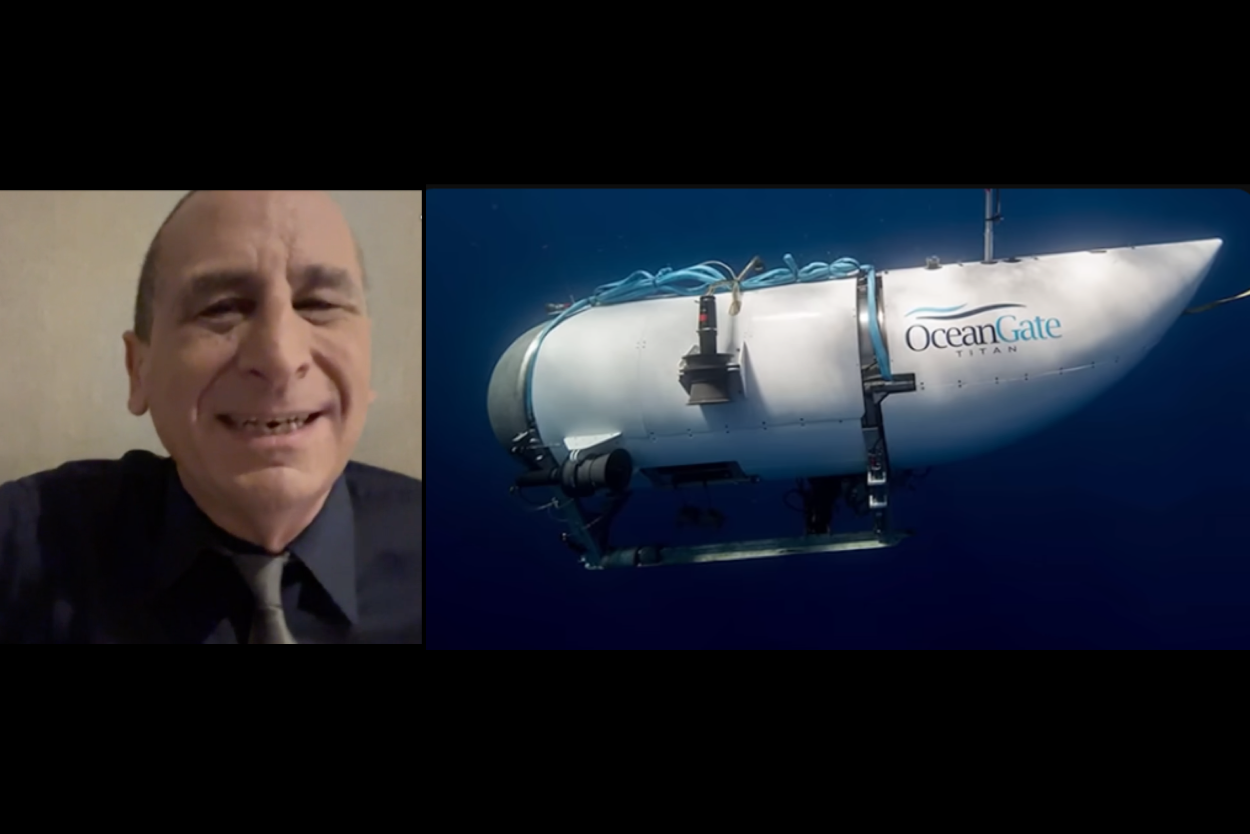Mike Reiss, the writer and the producer of “The Simpsons,” recently recalled his voyage on the OceanGate Titanic submarine that has been missing somewhere in the Atlantic Ocean since Sunday (June 18).
Unfortunately, oxygen on the OceanGate Titanic submarine is approximated to have run out around 7:08 AM Thursday (June 22), but the fate of the 5 passengers who were on board is still unknown.
The OceanGate Titanic submarine contained 96 hours of emergency oxygen when the journey began to see the Titanic wreckage at the bottom of the North Atlantic Ocean.
Reportedly, the submarine vanished in the waters off Newfoundland and has yet to be found.
Three countries, including the U.S., Canada, and France, have been involved in the search efforts.
The search crew detected some banging sounds they believed to be coming from the water on Wednesday (June 21).
Watch the “11 Alive” news report on the missing OceanGate Titanic submarine below:
Reportedly, the passengers on the vessel paid $250k a piece to view the Titanic wreckage at the bottom of the ocean.
Mike Reiss, the writer and producer of “The Simpsons,” recently detailed his voyage on the OceanGate Titanic submarine.
It was smooth sailing to the point where I got on the submarine and it just drops for 2.5 hours.
It takes 2.5 hours to go 2.5 miles down. And I fell asleep.
I mean, if you want to hear a man not panicky, I had a beautiful nap on the submarine and it’s, it’s a very shocking experience to wake up from a nap and think you’re in bed.
And no, you’re in a tube two miles down under the ocean. But I woke up when we touched bottom and then we had to spend the next 2.5 hours just sailing around the ocean floor looking for the Titanic.
We knew it was there, we knew it was 500 yards away, but it was complete darkness and we had no real guide.
And so we just sailed for hours and at any moment, you know, you only get three hours on the bottom of the ocean and it’s nothing to do with oxygen or supplies.
It’s they just have to get you back to the surface while there’s still daylight. So 2.5 hours in, they’re about to just wrap the whole mission and we wouldn’t have seen the Titanic. We really just stumbled on it.
It popped into view and we literally only had enough time for the Instagram experience.
You know, it’s not what we all went for. You know, we’re not, these are not tourists who are doing this. These are explorers and people who were curious about the world. So I didn’t get the full experience. I got the photos.
…It is complete blackness and you know, they keep the sub itself very dimly lit. It’s really almost a spy experience. You’re just laying on the floor, there’s no furniture and it’s, it’s, you’re in this state, you’re scared, but you’re also very relaxed and you’re excited.
It’s amazing. You hold these three emotions at once. But uh they tell you before you go on and they go, ‘We’ve got food on board, we’ve got water on board and we have a toilet,’ and you’ll see it’s 10 hours, it’s a 10-hour trip and you won’t use any of them.
And for 10 hours, I never thought about even taking a sip of water, and the toilet they have on board the sub has never been used.
The one scary element of the whole voyage is the idea that to go back up, they push a lever that releases these lead weights and the weights fall off and then you bob to the surface like a cork. And that’s how simple the whole trip is.
You sink like a stone and then you bob up like a cork. And I just thought if something goes wrong with that lever, that switch, and doesn’t release the lead weights, I don’t know what else you can do. You’re just stuck. You obviously can’t get out of the sub and do it manually.
…I must say I took four different dives, three in New York Harbor and then the one to the Titanic. And there were always communication issues. You would lose contact sporadically and it’s not nothing I blame the sub for. I blame deep water for it. It just seems to go with the territory that communication would go in and out.
And then there was also, you know, literal communication was a problem where when we were looking for the sub, when we were looking for the Titanic, we’re getting all this advice from the surface going you know, turn left at this rock and we would go, ‘There is no rock.’
They kept feeding us information that didn’t correspond to where we were, exactly.
Mike Reiss also spoke on how he felt about the submarine being controlled by a video game controller of sorts.
Yeah, I know everyone’s focused on the detail and it makes them think, ‘Oh, this was a real rinky-dink operation.’ But that is one of the prime assets I think of the whole sub is just how simple it was.
I mean, they even let me steer and navigate around uh which was an amazing experience. But uh it’s that simple, you know, and you don’t want it overly complicated. There was never a moment where I go, ‘Oh, there’s a bunch of computers and machinery going here that I don’t understand.
The propulsion on it was literally just two propellers that look like a fan you would put on your desktop on a hot day.
Listen to Mike Reiss detail his voyage on board the OceanGate Titanic submarine below:
At the time of this post, the Coast Guard found a “debris field” near the Titanic.
Let me know your thoughts in the comments below, or join the convo on our socials. (Facebook, Instagram).
Source: TMZ










